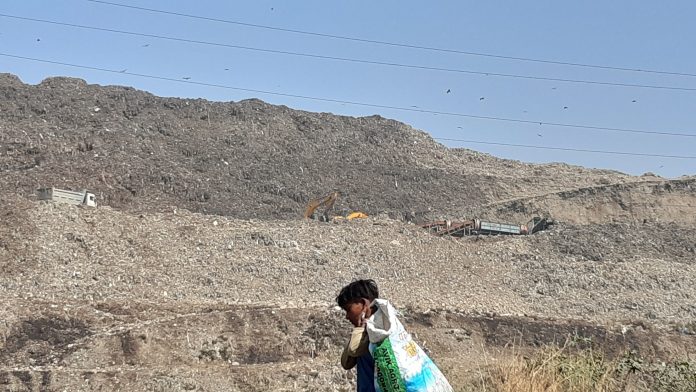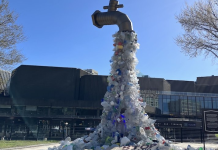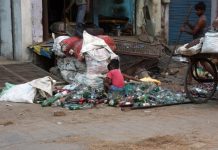
In our previous issue, we tried to explore why the ban on a few single-use plastic items has thus far failed in India. Some of the solutions to this complex solution could be a mix of upstream, midstream, and downstream measures such as stricter and strategized implementation of the ban, incentives for manufacturers of sustainable alternatives, research in design, making plastic costly to deter its use, upgrading recycling facilities, proper segregation and collection of waste, and a cut in the production of plastic.
Many companies manufacturing packaging, plastics, polymers, inks, and coatings promote recycling and sustainable products, including what they call biodegradable or compostable alternatives, as a possible way forward. But is it that simple?
In India, recycling is a growing but fragmented industry with both registered and a host of informal and untrained players, each with its own limitations. Recycling can be mechanical or chemical. There are also co-processing and waste-to-energy plants. Some waste aggregators also call themselves recyclers.
Chemical recycling has yet to take off in India, and so plastic waste is mostly either mechanically recycled into pellets to be made into other—mostly downcycled—products or sent to cement factories to derive furl and waste-to-energy plants, which is generally considered not so eco-friendly. Recycling or recycled products must also be cost-effective and economically viable to produce at scale.
Environment experts say only certain types of plastic such as PET bottles or monolayer packaging such as milk packets are picked by waste-pickers and recyclers as they carry a certain economic value and the more problematic multi-layered packaging (MLP) is generally left out of the recycling chain. Though some claim MLPs can be recycled, there aren’t enough takers as both the recycling process and the end product could be expensive.
“The problem is that recycling in India is mostly secondary and the end products are mostly downcycled. A PET bottle does not get converted into another PET bottle. It is mostly recycled into fabric or some other stuff. MLPs, though hypothetically can be recycled, do not meet the criteria of the economy of scale and so aren’t picked up,” says Atin Biswas, program director at the Centre for Science Environment (CSE).
Speakers at a conference organized by CSE on 29 October to discuss extended producer responsibility (EPR) for plastic packaging, also deliberated on the problems and roadblocks in recycling. One of the key problems as unanimously pointed out by most participants is the lack of proper segregation and collection of waste. Mostly, mixed waste ends up at landfills, and it is left to the waste-pickers to pick the ones that bring some value to them.
Then there is the problem of the vast array of informal units recycling plastic in whatever way they can, disregarding all safety rules and norms. Many of these units make food containers, which may retain toxic remnants.

What are sustainable alternatives?
With consumers now more aware of plastic pollution, a host of brand owners, converters, and plastic manufacturers are now speaking about sustainable alternatives that either use less plastic or are more recyclable. Others are advocating biodegradable or compostable plastics. However, as the experts pointed out, biodegradable or compostable are loosely used terms. At the CSE conference, most speakers were straight to point out that biodegradable plastic is a myth in India and compostable plastics are possible only in strict industrial conditions and, if mixed with other plastic waste and processed, present another set of problems.
The increased awareness about plastic pollution has now led to a spike in paperization of packaging, led by eCommerce platforms. Many companies and start-ups are also producing alternatives such as products made of bamboo, bagasse, seaweed, areca leaf, or biopolymers. While paper and other alternatives work for dry products, liquids and food packaging typically need a metalized layer of polymer or another barrier layer to provide reasonable safety and shelf life.
Priti Banthia Mahesh, an independent researcher and campaigner, says there is a need to have a holistic look at alternatives. “Look at non-woven bags for example. Though these are promoted as sustainable, they are essentially plastic in a different format.” She advocated the need to eliminate unnecessary plastic items. “Why do we need straws to drink?” she asked, adding waste-to-energy is another environmentally bad idea.
Both experts stress the importance of design. “Do not make products that aren’t recyclable,” they say, adding manufacturers of alternatives need to be given incentives and plastic made costly to deter its use.
All eyes on Busan
Perhaps with all these thoughts in mind, negotiators and stakeholders from across the world meet in less than a month in Busan, South Korea, for the fifth session of the Intergovernmental Negotiating Committee to develop an international legally binding instrument on plastic pollution (INC-5). The meeting is scheduled to take place from 25 November to 1 December 2024.
In the last meeting in Ottawa, as Priti Mahesh and Biswas explained, oil and plastic-producing nations insisted that it is not an upstream issue that could require a cut in polymer and plastic production, but more of a downstream problem, which is the management of plastics.
Opinions on extended producer responsibility, which would make the producers of packaging and consumer brands responsible for the entire life-cycle of packs, were split. Some countries favored implementing global EPR schemes. Others said they would prefer for these schemes to be voluntary or not included in the final treaty text at all.
Both experts said though the last four meetings have not been so encouraging, they can only hope for the best. Biswas’ one ray of hope is that the narrative has now shifted from management to the life-cycle of plastic with a focus on its ill effects on human health.
At the CSE conference, stakeholders agreed that although tackling plastic pollution is a humongous task, the fact that there is an increased buzz over the problem is by itself a positive sign.
In subsequent articles, we will have a close look at the EPR regime, what brand owners, converters and plastic and polymer manufacturers are doing to scale up their sustainability initiatives and practices, greenwashing by companies as well as the ill-effects of plastics on human health.









